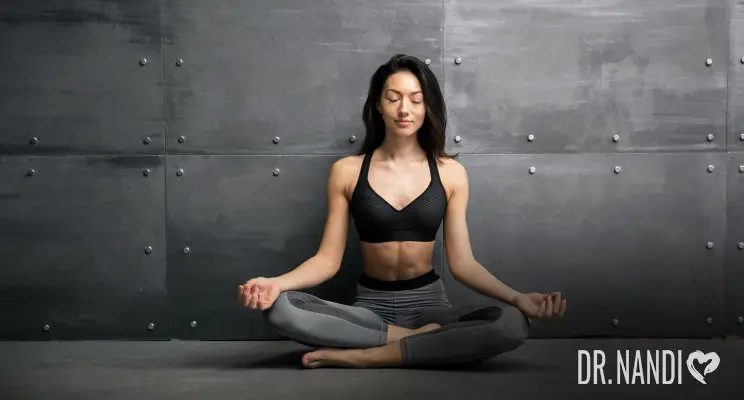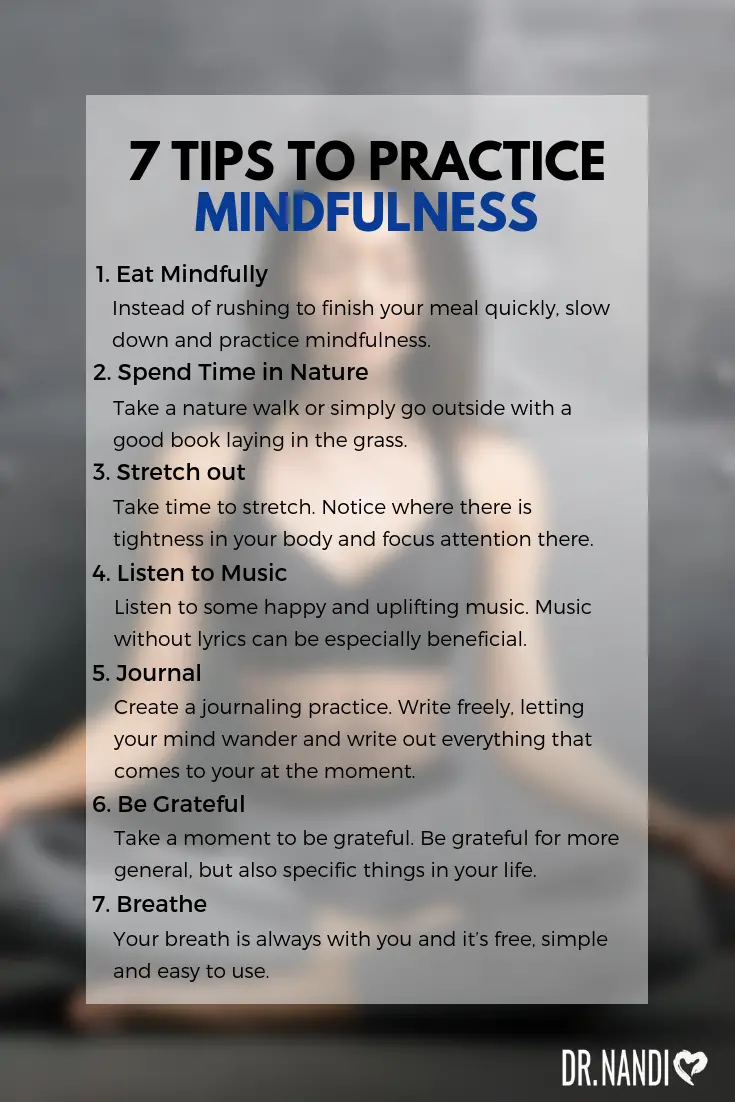Do you want to experience more happiness, better health, less stress, and less anxiety in your life? I bet you do!
Mindfulness and meditation are necessary for almost anyone in this day and age where stress and depression are at an all time high. But what is mindfulness and how can you learn to meditate without becoming a monk? I am here to help you with that.
What Is Mindfulness?
Is your mind full or are you being mindful?
Mindfulness is a state when you are being conscious and aware. When you are mindful, you are present in the moment, acknowledging and accepting your feelings, thoughts, bodily sensations, environment and experiences. You accept what is happening instead of dwelling in the past or obsessing over the future. You are making conscious decisions instead of being impulsive. Mindfulness is the opposite of having a monkey brain.
What Is Meditation?
You have probably heard about meditation and that you should meditate regularly. But do you know what meditation is? It is much more than just sitting around quietly in a lotus pose. In fact, you don’t even have to sit cross-legged or sit at all to meditate!
Meditation is a state of thoughtless awareness. The goal is the achieve a profound state of quiet, peace and calm and being in the present. Of course, this is the ultimate goal of meditation. Experiencing thoughtless awareness at the moment is difficult and takes practice. Chances are that it will take a while for you to experience this even for a moment when you first start to meditate. That’s okay. As distracting thoughts, feelings and sensations creep in during your practice, just accept them and let them go. The goal of meditation is not perfection, extreme mental effort or serious concentration, but practicing being in the present, finding calm and letting all else go, including pressure, perfection, judgment and worries.
The ultimate goal of meditation is to translate it into your life. If you meditate regularly, you will notice changes in your real life, such as less anxiety, increase a sense of being content, easier time dealing with stress, being less reactive to unexpected difficulties, better mental and physical health, and deeper sleep.
Forms of Meditation
If you think that meditation is not for you, perhaps you haven’t found the right form of meditation yet. There are so many meditation techniques to choose from. Here are a few:
- Mindfulness meditation
- Heartfulness meditation
- Mantra meditation
- Guided visualization
- Kundalini meditation
- Vipassana meditation
- Transcendental meditation (TM)
- Heart rhythm meditation (HRM)
- Zazen
- Qi Cong
- Loving kindness meditation
- Buddhist meditation
- Zen meditation
- Hindu meditation
- Sound meditation
- Kriya yoga meditation
- Movement meditation
- Dance meditation
- Tantra meditation

What if I don’t Know How to Mediate?
Since there are many ways to meditate and meditation techniques to use, there is no “one way or the highway.” Experiment with different techniques. The easiest way is to pick a mantra online or try a guided visualization that resonates with you.
This guide should help you to get started if you are a beginner. Mediation doesn’t have to take much time. Start with a minute and increase to 5, 10 or 15 minutes.
- Take a seat on a meditation cushion, a chair, the floor, a park bench or on the grass. Make sure you feel stable.
- Notice your legs. On a cushion, you can cross your legs or kneel on your knees. On a chair, make your feet are touching the ground.
- If it’s physically impossible, you can also lay down on your back.
- Straighten your upper body. Avoid tensing up. Keep your spine natural and remain relaxed and comfortable.
- Keep your arms parallel to your upper body.
- Drop your chin and gaze downward. You may allow your eyelids to lower or close. If you are laying down, gaze towards your belly with eyelids lowered or closed.
- Relax. Take a few moments to bring your attention back to your breath.
- Start noticing the sensations in your body.
- Feel your breath moving in and out. You don’t have to follow any breathing techniques, simply follow your breath.
- As your mind wanders to places (it will), don’t judge, simply bring it back to the present by paying attention to your breath.
- Using a mantra can also help to keep your attention from wandering or coming back to it.
- Try to pause before making any movements or physical adjustments. The goal is to eventually sit or lay still without movement, allowing any sensations – including itching, discomfort, and pain – to arise and go.
- When you are ready, slowly open your eyes. Take a moment to notice your surroundings, listen to the sounds and notice the colors. Notice any emotions and thoughts that may come up. Take a moment of silent gratitude.
- A good way to follow up with meditation is to stretch out your body or journal jotting down your feelings, thoughts, and messages that might’ve come up. You can create your own pre and post-meditation ritual that feels right for you.
7 Tips To Practice Mindfulness
Meditation is not the only way of mindfulness. Try these 7 powerful tips to practice mindfulness in your daily life.

- Eat mindfully: Instead of rushing to finish your meal quickly, slow down and practice mindfulness. Notice the colors first, then move onto the smell. Take a small bite to notice the textures and flavors. Eat slowly with small breaks noticing your body’s messages and feeling of satisfaction as you approach the end of your meal.
- Spend time in nature: Take a nature walk or simply go outside with a good book laying in the grass. Notice the colors, the sunlight, the shapes, and textures of plants. Feel connected. Hug a tree or smell a flower.
- Stretch out: Take time to stretch. Notice where there is tightness in your body and focus attention there. Practicing yoga is also a wonderful way to practice being in the present, being mindful, stretch, move and strengthen your body.
- Listen to music: Listen to some happy and uplifting music. Music without lyrics can be especially beneficial. Get lost in the sounds. Notice your body’s sensations. Dance if you feel like it.
- Journal: Create a journaling practice. Write freely, letting your mind wander and write out everything that comes to your at the moment.
- Be grateful: Take a moment to be grateful. Be grateful for more general, but also specific things in your life. Be grateful for the small things. Be grateful for things that are seemingly difficult, they only help you learn and grow. Keep a gratitude journal.
- Breathe: Your breath is always with you and it’s free, simple and easy to use. Coming back to your breath is the fastest and simplest way to slow down and practice mindfulness. Set reminders throughout the day to take 3 – 5 slow, deep breaths.
Meditating regularly and following these daily steps to mindfulness can bring you amazing benefits, including better health, improved mental health, increased energy and more happiness in life.

What is your favorite way to be mindful and meditate? Do you have other tips for mindfulness? Share your thoughts and tips in the comments section, we want to hear from you.




















